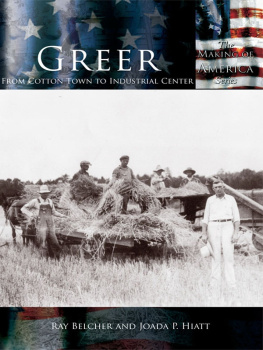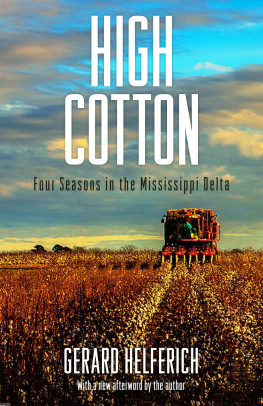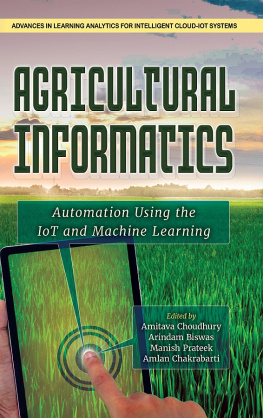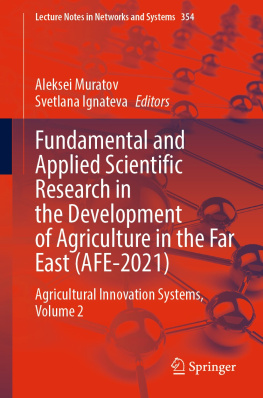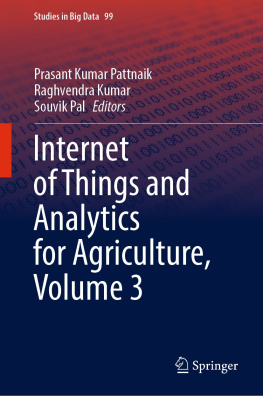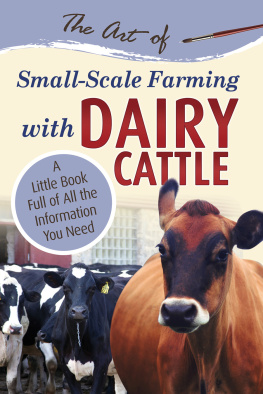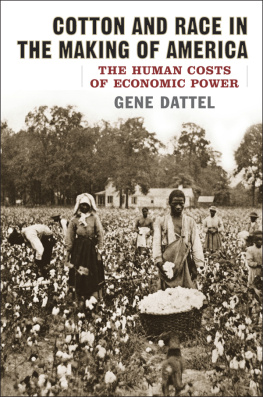NEW PERSPECTIVES ON THE SOUTH
Charles P. Roland, General Editor
Cotton Fields
No More
Southern Agriculture
1865-1980
GILBERT C. FITE
Copyright 1984 by The University Press of Kentucky
Scholarly publisher for the Commonwealth,
serving Bellarmine University, Berea College, Centre
College of Kentucky, Eastern Kentucky University,
The Filson Historical Society, Georgetown College,
Kentucky Historical Society, Kentucky State University,
Morehead State University, Murray State University,
Northern Kentucky University, Transylvania University,
University of Kentucky, University of Louisville,
and Western Kentucky University.
All rights reserved.
Editorial and Sales Offices: The University Press of Kentucky
663 South Limestone Street, Lexington, Kentucky 40508-4008
www.kentuckypress.com
Cataloging-in-Publication Data is available from the Library of Congress.
ISBN 978-0-8131-0160-6 (pbk: acid-free paper)
This book is printed on acid-free recycled paper meeting
the requirements of the American National Standard
for Permanence in Paper for Printed Library Materials.
Manufactured in the United States of America.
| Member of the Association of
American University Presses |
For my grandchildren
NICOLAS, SONNY, RYAN, MATTHEW, OLIVIA, AND MICHAEL
all of whom were born too late to experience the joys
and agonies of farm life
Contents
Tables
Editors Preface
The South throughout most of its history has been a predominantly rural and agricultural society. For more than two centuries the plantation and slave labor were the most distinguishing features of southern agriculture, though the overwhelming majority of the regions farmers were neither planters, in the traditional meaning, nor slaveowners. Then came the Civil War and emancipation, followed by almost a century and a quarter of change. Today the southern population has virtually ceased to be rural, and to a significant extent the economy has become industrial, yet the area continues to be one of the major agricultural producers of the world.
Mr. Fite brings to the present study a distinguished career in scholarship on American agriculture and farm life. Here he describes splendidly the vast changes that have taken place in southern agriculture since the Civil War. He pays special attention to the problems of cotton monoculture, tenantry, the crop-lien credit system, and soil erosionfactors that affected the southern farmer from the Civil War to the New Deal of the 1930s. He also emphasizes the stunning developments of the post-World War II decades, including the spread of large-scale commercial farming, mechanization, and crop diversification. Nor does he lose sight of the human dimension, the farmers and workers who remain on the land after most of their fellows have been displaced by machines, and whose numbers have now diminished to fewer than 3 percent of the total southern population.
In telling the story of southern agriculture and farm life since the Civil War, and in demonstrating their critical roles in the larger experience of the region, the author makes this volume eminently suitable for inclusion in New Perspectives on the South. The series is designed to give a fresh and comprehensive view of the Souths history, as seen in the light of the many occurrences since World War II. Each volume is expected to be a complete essay representing both a synthesis of the best scholarship on the subject and an interpretive analysis derived from the authors own research and reflections. More than twenty volumes are in prospect.
CHARLES P. ROLAND
Preface
Despite the economic importance of agriculture in the post-Civil War South, no general history of southern farming since the end of slavery has been written. Numerous book-length studies have been published on particular aspects of southern agriculture, such as sharecropping and tenancy, and on the problems southern farmers faced during the Great Depression. Some excellent interpretative articles also have appeared. But the many pieces that make up commercial agricultural development in the South since the Civil War have not been put together into a meaningful whole. That is the purpose of this book.
There is, of course, no single agricultural South. The variations in climate, rainfall, landforms, and quality of soil are enormous. It is a region where many larger and smaller geographic subregions exist which have historically provided the basis for great differences in productivity, the kinds of crops raised, and farm organization. Besides such major subregions as the Piedmont, the Coastal Plains, and the Mississippi River alluvial valley, there are numerous smaller subregions, such as the central highlands of Florida, where citrus came to predominate. The South is a land of infinite geographical and agricultural variety. Because of this, exceptions can be made to nearly every generalization about the history of southern farming. Nevertheless, there have been some common denominators, and these I have sought to identify and explain.
For purposes of my study I have arbitrarily defined the South as the eleven former Confederate States stretching from Virginia to Texas. It might be argued that other states or parts of states, such as Oklahoma and Kentucky or Southern Missouri, should be included in any book on southern agriculture. However, the principal elements of southern farming are found in the old Confederacy. Thus, unless otherwise indicated, when I write about the South I am referring to the eleven-state region. Occasionally, to present a broader picture, I may mention the census South, which includes sixteen states, but this is rare.
This study deals mainly with commercial farmers, the problems they faced, and their long struggle to modernize and to earn a decent standard of living. Unfortunately most farmers never achieved economic success, and through the 1930s poverty was the most common condition among farmers throughout the South. Because of the persistence of rural poverty from the 1870s to World War II, reference to living conditions on southern farms is made at several points through the book. While this results in some repetition, it shows more clearly that time did not heal the situation for millions of farm people in the region. Moreover, in order to document fully the developments in southern agriculture, I have relied heavily on statistics.
The main economic problem confronting southern farmers for three generations after 1865 was an excess of rural population in relation to developed land resources. The change to a more favorable man-land ratio was thwarted by the lack of off-farm jobs to siphon away surplus farm workers. The pressure of people on land was heavy from the 1880s to the 1940s. Not until the 1930s did events begin to merge in such a way as to destroy the old patterns of small, nonproductive, and poverty-ridden farms throughout the South. The New Deals acreage restriction and price support programs, federal credit agencies, and support for soil conservation, combined with agricultural science and technology, finally produced a new and modernized agriculture. Within one generation, from the late 1930s to the 1960s, a revolution occurred on southern commercial farms. The fewer and larger farms became mechanized, capital intensive, and labor efficient. My intent is to explain why agricultural change was so slow in the South and to show how the agents of change worked throughout the region after 1933 to destroy the old and produce a modernized agriculture.


